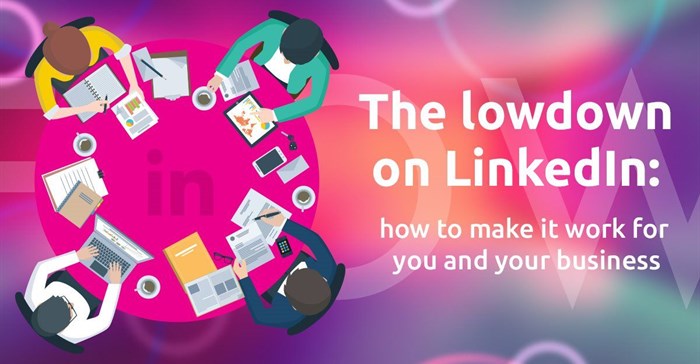What do you use LinkedIn for? Chances are that you see it mainly as a platform to promote your personal brand and to make professional connections. With its focus on "serious" work-related information and career advancement, you may also see it as a social media site that is a bit more "truthful" than the more fun-focused social sites.
But these are not the only factors that distinguish LinkedIn from all the other platforms out there. To me, four characteristics stand out.
The first is that the site prioritises carefully considered content. LinkedIn is the perfect platform to post – and read – thought-provoking, longer-form articles such as thought leadership pieces and industry-related news. You won’t find someone showing off those cute cupcakes they baked this morning.
Secondly, LinkedIn has loads of cool elements to explore. Apart from visitor and follower numbers, and “updates” (which is how the platform refers to posts), you can dive into information about competitors, leads and more. It’s all about creating a professional community.
The third thing that makes this social site fascinating is that it gathers information that other platforms do not ask for, such as job title, industry, seniority level and career-focused groups you’re part of. This information can be useful both for building your own brand and for your business.
Fourthly, LinkedIn’s algorithm is unique. This is not the place for emojis – the algorithm (which sorts posts in your feed based on relevancy) “likes” nicely written articles and useful pieces of information. So, while you’ll see updates by your network and content you have engaged with in the past, it will also bring you specific content that others are engaging with and that you might find interesting.
So, how can you get the most out of LinkedIn as a tool, relying purely on organic traffic (not paid media or advertising)? Here are six useful tactics:
Use polls
LinkedIn is an ideal platform for running polls, which offer a fun and effective way of getting people to tell you what they think. They’re also great for attracting engagement to new business pages.
Use articles
Taking advantage of the special LinkedIn feature that allows for them to be laid out like a regular website article with a cover image. As I already mentioned, thoughtful articles do very well on LinkedIn – better than regular updates. While one of the rewarding aspects of being on LinkedIn is to follow other people’s pages and read what they’ve written, you can also tag others on your own content and build a bank of influential pieces.
Invite connections
While the platform emphasises “genuine” conversations, you can send out a certain number of page invites to your first-degree connections (currently capped at 100, or 250, depending on your account “credits” per month) to ask people to check out your page. (Every time someone accepts a page invite from you, the invite credit is “returned” to you).
Use tagging
Tagging people’s personal or business pages on your LinkedIn content is a great way to get them to engage with you or to share your content.
Use recommendations
This feature is unique to LinkedIn. Having a written recommendation or your skills endorsed by others helps to add legitimacy to your personal profile. You can recommend others too.
Use hashtags
Hashtags can help you find conversations you want to be part of, so use them to look for information – or apply hashtags to your own page to help others find your content.
Bear in mind that – if you’re a business and have the budget – paid advertising can also be very effective on LinkedIn. The platform allows you to target specific markets based on factors ranging from skills, seniority and job title to industry, location and language. Ads either go into inboxes or appear as updates.
Should your brand be on LinkedIn?
The short answer is that it depends on what you’re trying to achieve and whether it aligns with your brand. If you’re in tourism, for example, you may not be posting glorious sunsets (which would be better suited to Instagram), but perhaps rather provide an insight into the industry.
It also depends on whether you have the resources (i.e. someone to write that long-form content and manage the platform).
So, if you do take the plunge, how do you get it right? Here are my top tips:
- Don’t be afraid of publishing long-form writing on your platform
- Tag, tag, tag – tag people and pages
- Use polls as a great way to get feedback
- Celebrate others – it’s about building an online professional network
- Offer something new – find an angle or insight to get you or your brand noticed
The bottom line? As on other social media platforms, content is king on LinkedIn – but it should be the right content. It helps to give you a professional edge, enhances your profile and helps you to enhance others’ profiles. It’s all about growing – the insights you put out should also be useful and add value to the LinkedIn community.






























